12-1, 12-4 or 12? Which? What do those numbers or letters even mean? We advise you!
Every woman wants to have her hair color result as she wishes. But the color result is not always successful, and thehair color may have an undesirable tint. How to avoid it? The basis is to choose the right shade of hair color. It, however, hides under those complicated combinations of numbers. What do those numbers even mean? Keep reading!
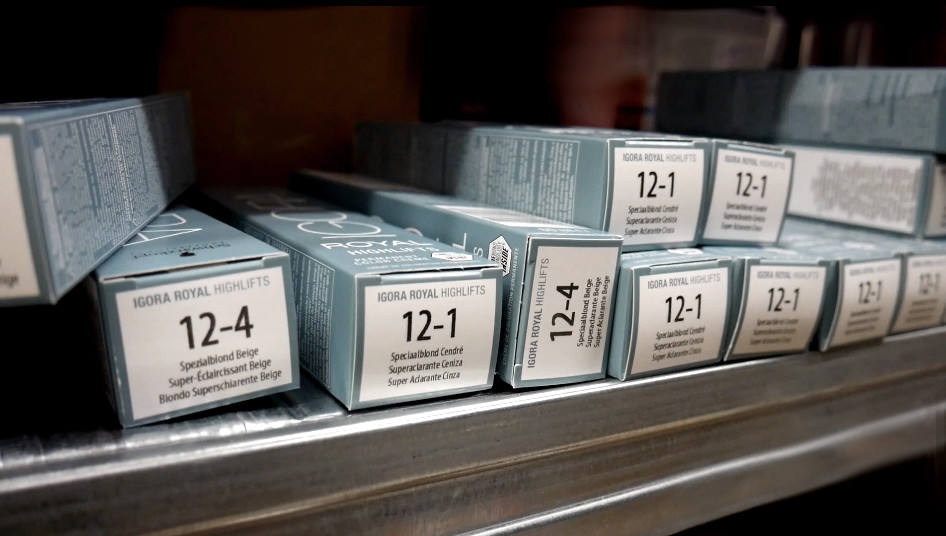
Professional hairdressing colours are often labelled with numbers or combinations of numbers and letters:
- Number before the slash (or decimal point, dash, dot) - an indicator of color level.
- The first number after the slash - an indicator of color shade.
- The next number after the slash - an indicator of color reflection.
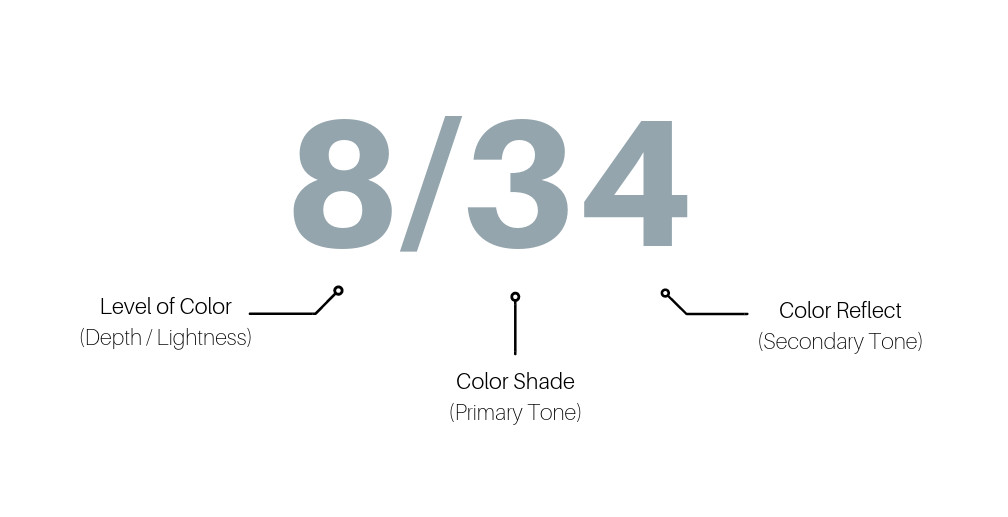
1) Level of Color
The first number which appears on the tube is the level of color (depth/lightness). This number refers to how light or how dark the colour is, and the tone describes the hue or essence of the colour. As you can see, each of the eleven levels of color is appropriately named to indicate a specific degree of lightness or darkness. The higher the first number is, the brighter tone is (ie. 1=black, 10=very light blonde). You may also meet with 11, 12 color depth and it usually indicates color for lightening process. You should always consult your color choice with the color chart of a particular brand.
This numbering system of the level of color is used by all professional hairdressing brands. It's an universal labelling (unlike the primary/secondary tone). However, there are also minor differences in the color numbering system for color levels. For example: for L'oréal Majirouge you can see C 6.64 Extra Red Copper Blonde. Here, the letter C placed in front of the number indicates that it is a color with high coverage even on grey hair.
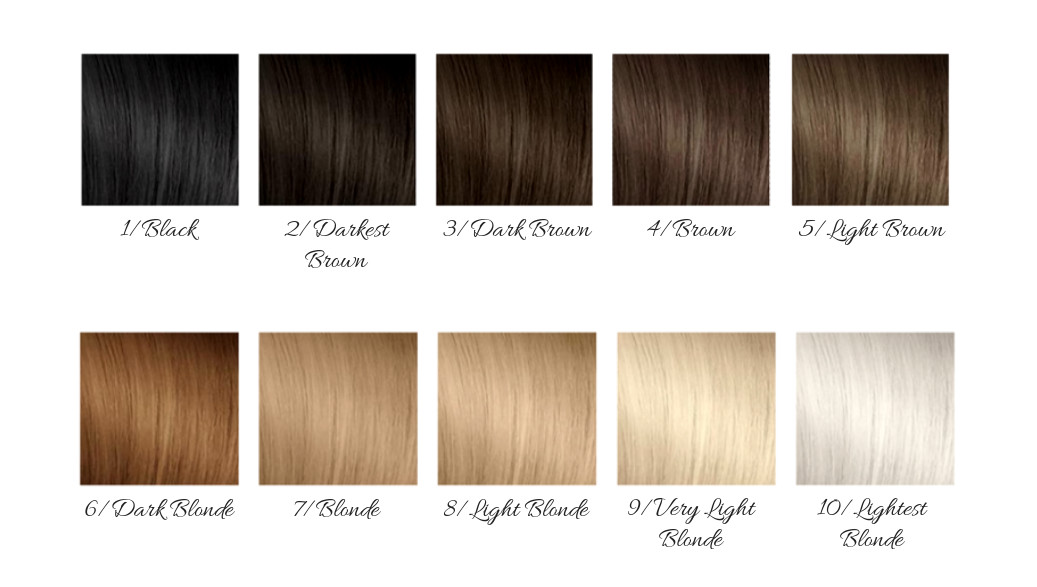
Glamot tip! If you hesitate between two tones, always choose rather the lighter shade.
2) Color Shades & Reflects
The next factor in color selection is choosing the tone or hue you wish to achieveing. Selecting the proper tone is essential to achieving beautiful color results. This is indicated by the other numbers that follow the slash or decimal point. Every hairdressing brand uses a slightly different scale (see picture below). But the principle of labelling is very similar. In general:
Color Shade
- The first number after the slash
- Refers to the primary tone - which is the dominant hue within a color
- The color shade will be more visible in the final hair color
- The major tone also affects whether the resulting hair color will be warm or cold
Color Reflect
- The second (or third) number after the slash
- Refers to the secondary tone - these are reflections of color
- The reflects of color will be less visible in the final hair color
Here's what those numbers mean for the brands Tigi, L'oréal and Wella:
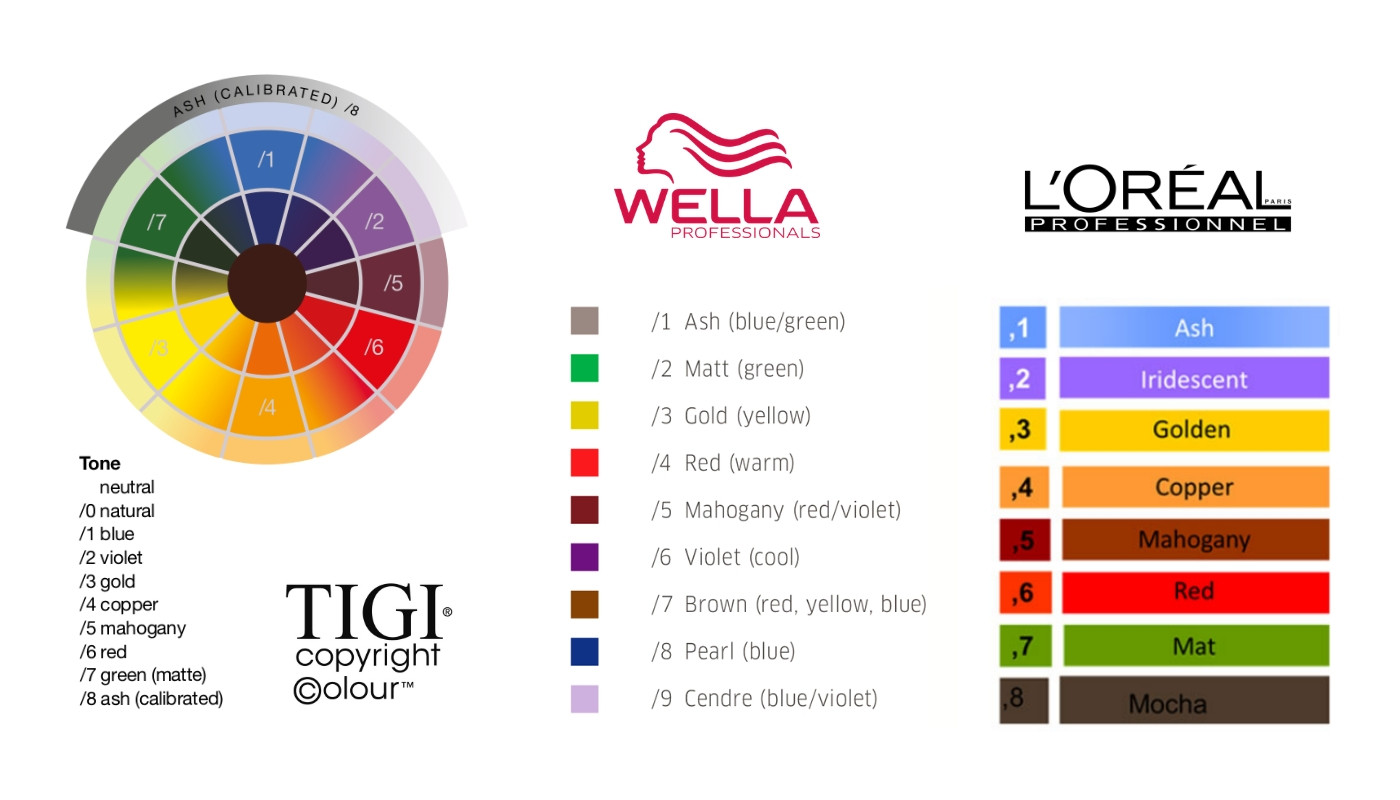
For example 8,34 (for L'oreal Inoa) means that it is a Light Gold Blonde with Copper reflects.
3) Letters
But, some brands of hair color use letters instead of numbers: e. g. Matrix or Goldwell:
- /N – Natural
- /A – Ash
- /V – Violet
- /R – Red
- /B – Brown
- /G – Gold
- /C – Copper
- /M - Mocha
- /W - Warm
For a better understanding, here is an example:
- 3/RV = Dark Brown Red Violet
- 9/AV = Very Lighter Blonde Ash Violet
4) Examples of Hair Color Numbering
-
Duplicate numbers before the slash (33/02) signify that the hair color is a very intense color with good ability to cover grey hair.
-
Duplicate numbers after the slash (7/22) signify that the shade is an intense color.
-
A single number without the slash (1) means the color is neutral. A neutral shade is a calibration complementary tone, that helps to achieve an overall neutral end result with enhanced uniform coverage on non-pigmented hair.
-
Zero after a slash (/0) denotes a natural tone. It is a combination of a complementary tone, designed with a slight warm hue.
For example for Tigi Copyright Color Creative:
- 7/32 - Golden Violet Blonde
- 77/66 - Intense Red Blonde
- 7 - Neutral Blonde
Shades and reflections can have more degrees of intensity, for example:
- 7/0 - Natural Blonde
- 7/03 - Natural Golden Blonde
- 7/3 - Golden Blonde
- 7/33 - Intense Golden Blonde
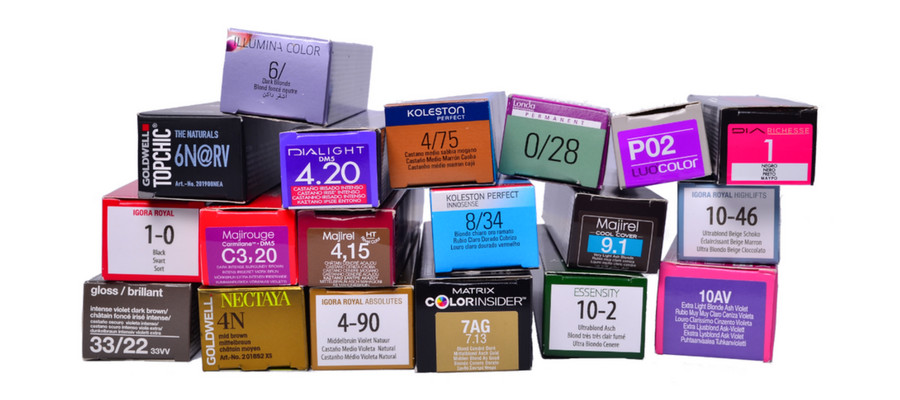
5) Neutralise Unwanted Tones (Yellow, Brassiness)
During the lightening process, the warm undertone of the hair colour is taken through stages, from red through to a very pale yellow. Sometimes this natural underlying pigmentation is too dominant. Luckily, the color numbering system also allows neutralising these unwanted undertones. Usually each brand has special colors in its color portfolio to solve this problem. These colors are usually called Special Mix (e.g. Igora Royal - 0-11, 0-22 etc., Wella Color Touch Special Mix, TIGI Copyright Colour Mix Master. These unique formulas allow you to adjust the tonal effects of your formulations and neutralize unwanted warmth.
Taking this undertone into account is essential when deciding on a product choice and processing time. In order to neutralise the undertone, a complementary tone must be used in the formula. A basic rule of haircolor is that cool (ash) tones neutralize warm (red or gold) tones and warm tones neutralize cool tones. Decide if it is too red, orange or yellow, then just choose the complementary tone that is opposite on the color wheel.
Opposite colors neutralize each other:
- Orange - increases warm or copper tones and improves grey coverage in brown or darker levels of color.
- Red - adds a true red tone to any level, especially recommended for mid to darker levels.
- Violet - increases ash tone and reduces yellow and gold in blonde levels without affecting the level of the formula.
- Blue - increases ash tone and reduces brassiness in dark blonde to medium brown levels without affecting the level of the formula.
- Green - increases ash tone and reduces warmth in dark brown levels.
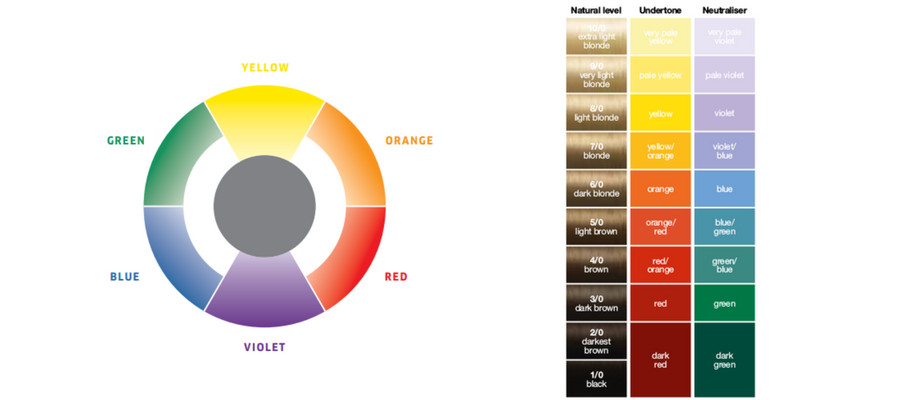
Remember! The outcome of your final target shade will also be influenced by several other factors: undercoat and distribution of pigment. Your hair type and the quality of your hair also influence dyeing. If you aren't sure, always prefer to entrust your hair to the hands of a professional hairdressers.
Do not miss:







